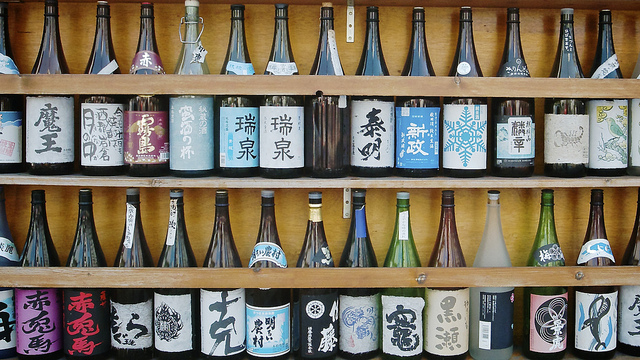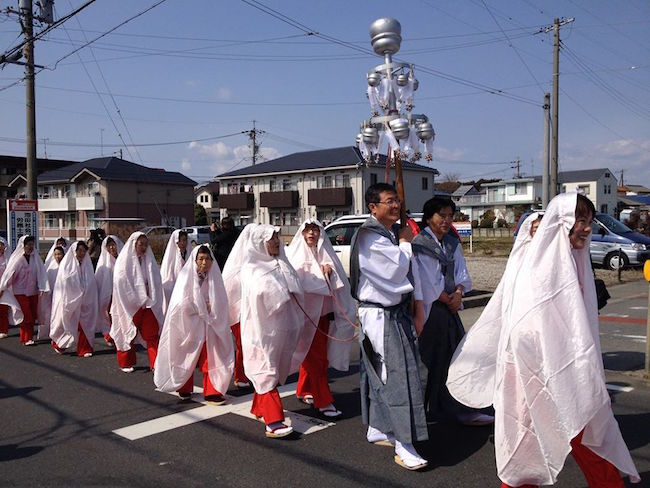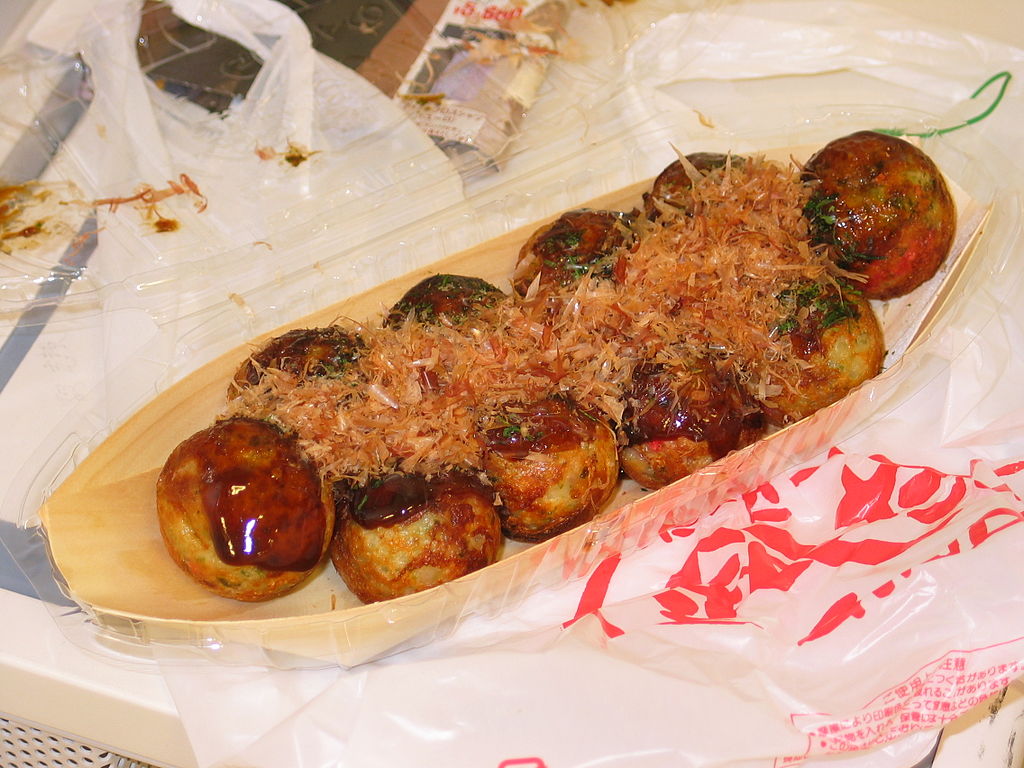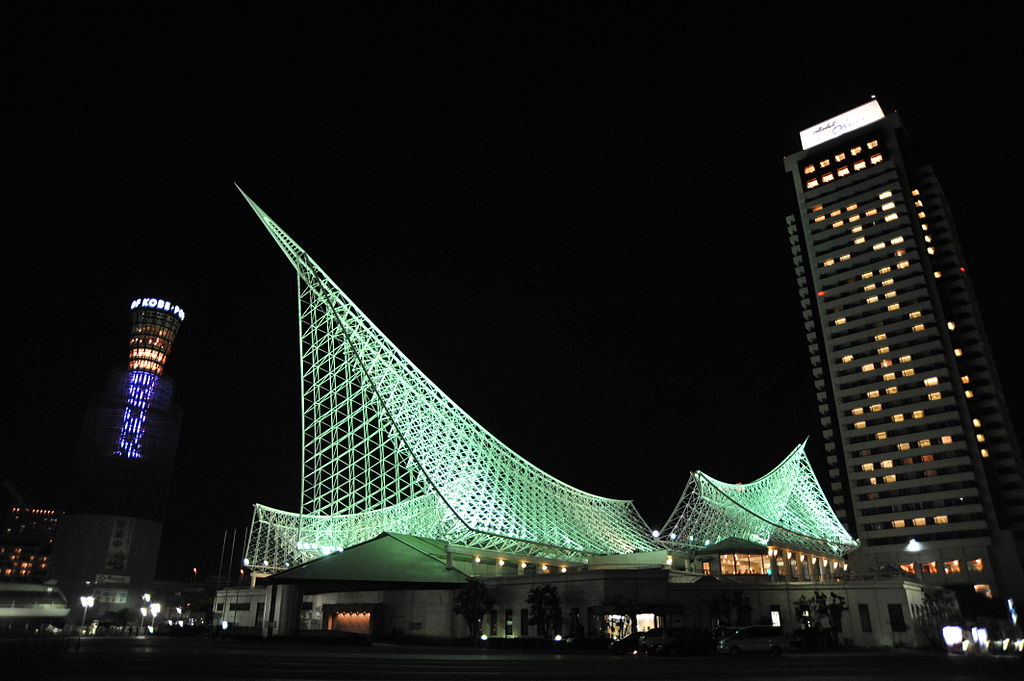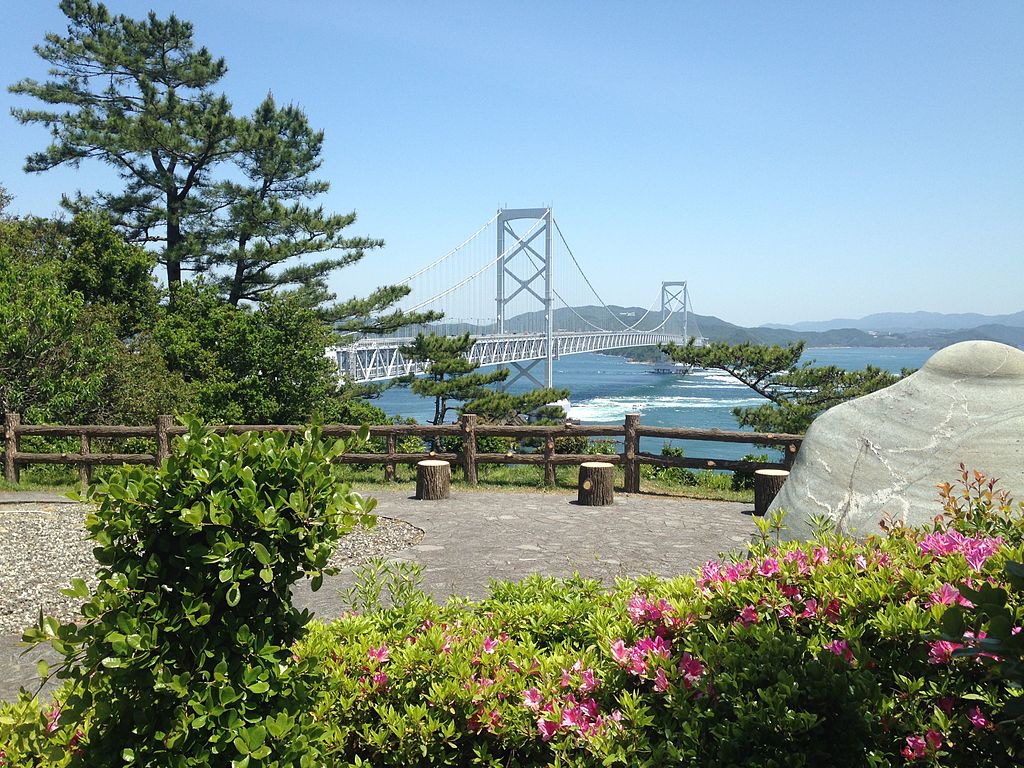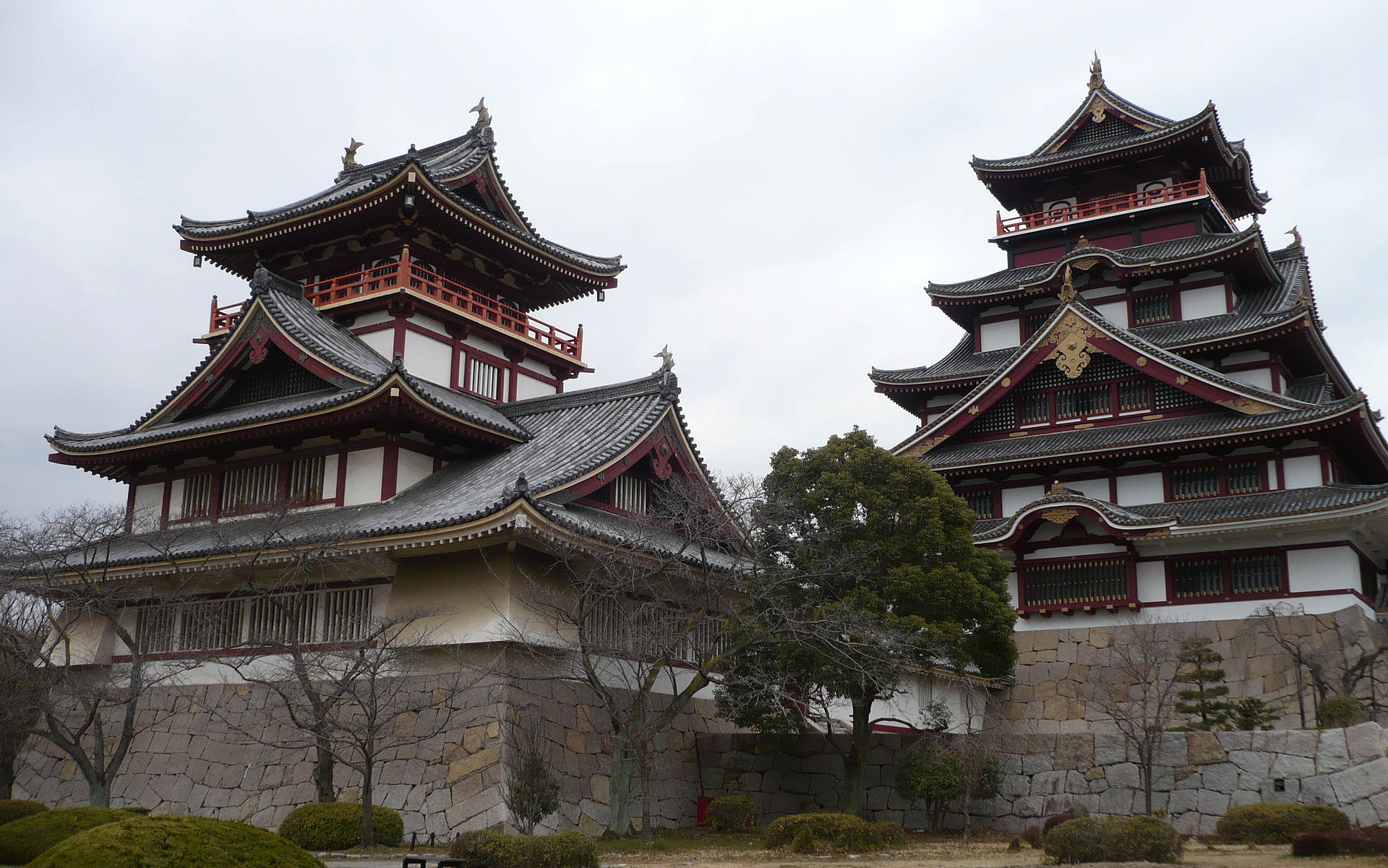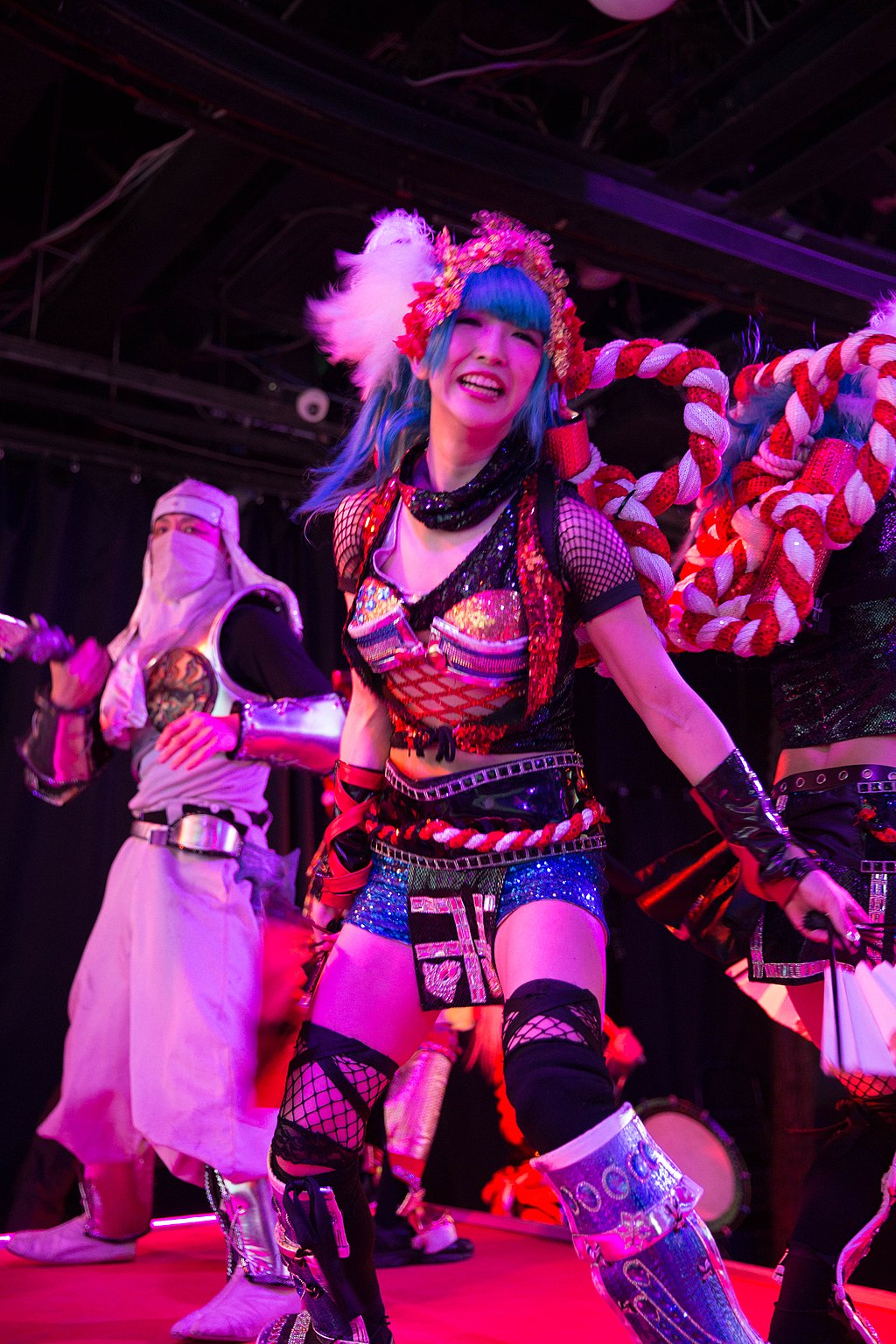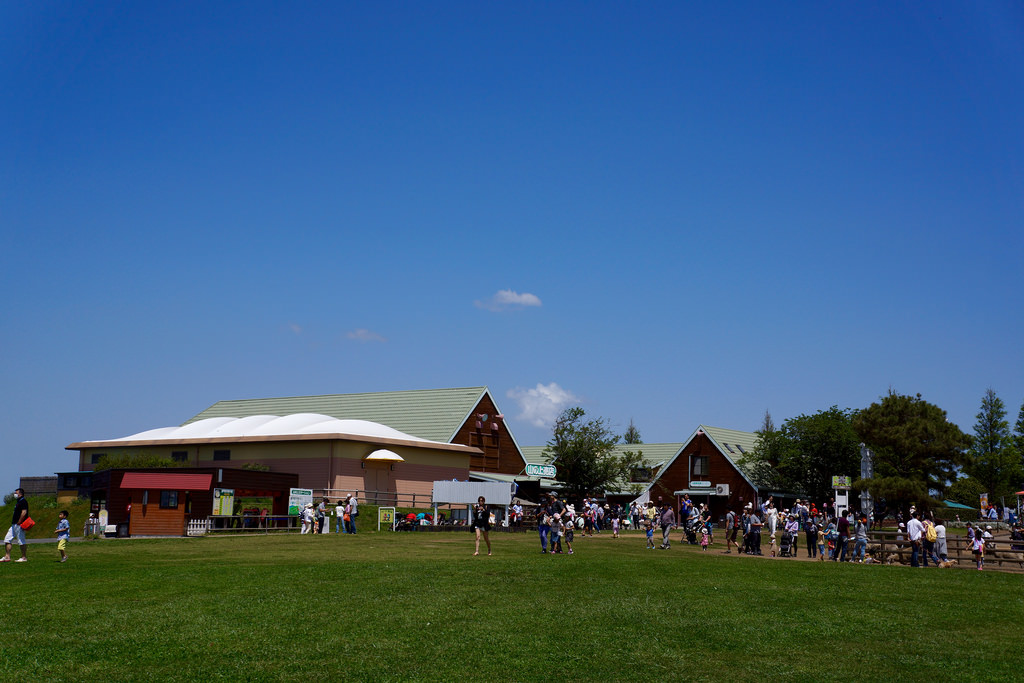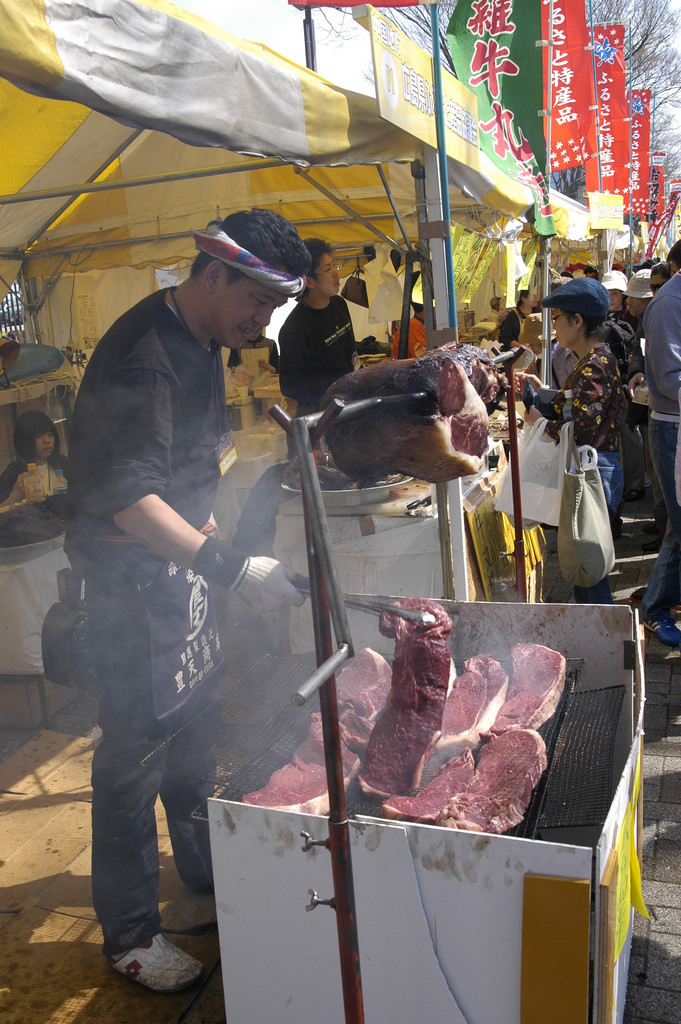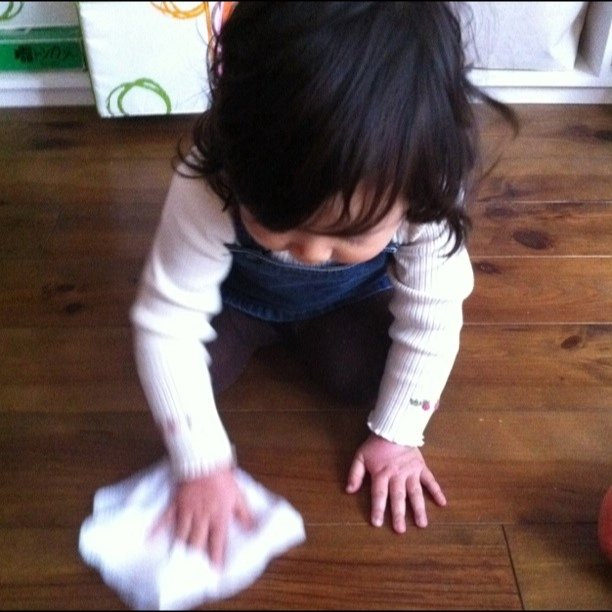Feb 26, 2018
Sake’ing it to ya, at the Nayabashi Sake Festival in Ngaoya

Forget Asahi, Kirin or Strong Zero, there can be no doubt that the national drink of Japan is sake. ‘Nihonshu’, to give it its proper title (with ‘sake’ being a term to cover all alcoholic drinks), has been the main tipple of choice in these parts since the Nara period (710 to 794), after which it became used for religious ceremonies, court festivals and drinking games.
Obviously, not much has changed, and today it is enjoyed all over the country with many breweries, or ‘kura’, around the country involved in its production (in 2007 there were approximately 1700 kura making around 10,000 different types of sake).
The problem that many foreigners find is that, much like with wine, if you don’t know what you are looking for, you can make some bad choices and end up picking up a jar of One Cup Sake from a convenience store. (Tip: never, ever pick up One Cup Sake. It is less a drink and more a punishment.)
If you want to learn how to tell your Asahi from your Ginjo, the best thing to do is head somewhere at which you can sample various stuff, with informative folks who can help you out. Which is where the Nayabashi Sake Festival comes in.
Nagoya’s Nayabashi Sake Festival
On the fourth Friday of every month the riverside promenade between Nayabashi and Nishikibashi bridges (a couple of minutes from the Hilton and near that inexplicably large mural of a dolphin) is the Nayabashi Night Market. Most months there is a different theme, and this month it is, of course, sake.
March 23 and 24 will see the return of the Nayabashi Sake Festival, at which you can wander along the canal, sampling many different types of nihonshu from around the country (although at time of us going to press there isn’t a whole lot of information on what types will be available). At a cost of 1,300 JPY – or 1,200 JPY if you purchase with your Manaca card – you can pick up five tickets, which are exchangeable for cups of sake at the various different stalls.
An additional cost is the 300 JPY that you may need to spend to purchase an ‘ochoko’ sake cup, although some sources claim that you can bring your own. Personally, I think the 300 yen is worth it for a cool little keepsake of the festival. However, if you want to save money, it is perhaps advisable to turn up on Saturday for ‘happy hour’ between 13:00 and 15:00 when you get six tickets for the same price as five.
Sake Festival Tips
- Bring a notebook to jot down brands that you like and don’t like.
- Ask for recommendations – do you like sweet, spicy or subtle flavors?
- Sip the nihonshu and savor it. It is not a tequila slammer!
- Eat something. Some nihonshu may not taste strong, but it can knock your head off, and you don’t want to fall in the canal!
- Have fun, and if you don’t find something you like, keep trying!*
*JIS recommends responsible consumption of alcohol. Know your limits.
Nayabashi Festival Details
- Where: Prefectural Route 60, 1 Chome-1 Meiekiminami, Nakamura-ku (map)
- When: 16:00 – 21:00 Friday March 23, 2018; 13:00 – 21:00 Saturday March 24, 2018
- Website: natsu1yoichi.blog133.fc2.com
Sake bars around Nagoya
If the festival has ignited a passion for tasting sake, why not try out one of these interesting sake bars around Nagoya.
The below postings are all recommendations from sake lovers that I know and trust, so are about personal taste. As such everything is for information only and Japan Info Swap does not endorse any of them.
Yata – Meieki
Specializing in nihonshu made from Junmai rice, Yata in Kitte Building is an extremely casual sake bar that sells sake by the wine glass, rather than an ochokko, so first timers may feel a little more comfortable. This is the ideal place for those of you who want to expand your knowledge. If you have sixty minutes and 2,000 JPY to spare, you can sample up to 40 different types of sake and learn exactly what your tastes and preferences are. Seeing as trying the lot would mean a different sake every one minute and thirty seconds, unless you are a particularly hardened drinker, you may want to go more than once. There used to be one in Fushimi, but I think it may now be used as an event space, so I’d head to the location in the Kitte Building to be sure.
- Where: Kitte Building 1 Chome-1-1 Meieki, Nakamura-ku
- Website: junmaishu.net
Marutani – Nishi-ku
Sake Bar Marutani is exactly what you might think of when the words ‘sake bar’ come to mind. Once a rice granary during the Edo period and set on the Horikawa river, it is all hard wood and old world charm. They have a large range of sake and meals perfectly balanced to match what you drink. It is the ideal ambiance in which to sip nihonshu in a classical atmosphere. I have had many recommendations for this place – from both expats and Japanese – and it is of such a high quality that I plan on taking my brother-in-law – a sommelier by trade – to sample his first sake experience when he comes to visit.
- Where: 1 Chome-37-17 Nagono, Nishi Ward
- Website: www.sakebar-marutani.jp
Torikko – Imaike
Everyone needs a friend who is a sake expert and Torikko in Imaike is the recommendation of mine. Although he said that the best sake bar around is in his own home, unless you get an invite from him, he says that this is the next best thing. This is a bar in the traditional style, but the sake choices are top notch and the ‘master’ (the Japanese term for what we would probably call a landlord or bar owner back home) is as friendly and helpful as he is knowledgable about all things nihonshu.
- Where: 28-23 Kandacho Chikusa-ku
- Website: www.tabelog.com
Osake No Kami Sama – Endoji
This place should be on the list for its name alone – it translates to The God of Sake – but it is much more than a clever name. Osake No Kami Sama is a standing bar in the covered arcade of Endoji, and is my own recommendation, and somewhere you can find me most Friday evenings post-work. A majorly relaxed atmosphere, a knowledgeable master and a foreigner-friendly mixed clientele of salarymen, local folks and nihonshu aficionados makes it a must visit bar, just as long as you have the legs to stand while you are drinking. They also have a great menu of Nagoya foods at unbeatable prices.
- Where: 2-Chome -12-5 Nagono, Nishi-ku
- Website: www.tabelog.com
Yorozuya Kuranosuke – Meieki
This is a restaurant that focuses primarily on Kyoto cuisine. Some may consider Kyoto ‘meshi’ a little bland, but it does work perfectly with nihonshu. Because of that they have over 30 different brands to choose from. Ranging from 490-880 JPY per glass, it’s a pretty reasonable price to get sampling.
- Where: 3 Chome-22-8 Meieki, Nakamura-ku
- Website: www.datz.jp/shop/yorozuya_meieki
Hida Takayama Breweries – Takayama
If you want to go further afield to sample nihonshu where it’s made, you can do worse than head to Takayama. The Gifu city has plenty of local breweries, and you can easily spend the day getting lost (and perhaps a little tipsy) trying out the brews. Some of them have been going for around 200 hundred years, so you can probably equate that longevity with consistent quality.
- Where: Takayama, Gifu Prefecture
- Website: www.hida.jp
Nagoya Breweries – Nagoya
There are also many breweries in the Nagoya and Aichi areas. Some of these offer sampling tours, but only on specific days. Check out the ever excellent kikuko-nagoya.com website for up-to-date details.
By Mark Guthrie
Image by atsunori kohsaki (Own work) [CC BY-SA 2.0], via flickr.com (modified)
Image by drufisher (Own work) [CC BY-SA 2.0], via flickr.com (modified)
Feb 26, 2018
Oagata Shrine Fertility Festival, Celebrating the Power of Femininity
If you have spent any time in Nagoya or its surrounds, then it is a good chance that you have heard of the Hōnen Matsuri harvest festival at Komaki. You, know that one. The one with the huge phallus that gets paraded around the city streets and everyone goes a bit willy-wild. Yeah, you know, a.k.a. ‘Penis Fest’.
I remember when I first came to Nagoya and read an article online about the Hōnen Matsuri, and below the line some commenter complained that, how like Japan it was, sexist beyond belief, celebrating the potency of the male parts, yet there was no festival celebrating the woman’s contribution to fertility. It was a good point. Or at least it would have been, had the commenter been right about there being no female celebration. Because there is, one stop down the train tracks, no less.
In fairness, its not surprising that the commentator didn’t know about the Hime-no-miya Honen Matsuri held in Inuyama’s Oagata Shrine, because not that many people do. However, to my mind, that’s one of the things that makes it a little bit special.

Held annually on the Sunday prior to March 15th (in 2018 that will be March 11th), the festival is held to pray for a good harvest and prosperity in the coming year. Oagata is said to have been a place of worship since the year 3 BCE, with the present shrine reconstructed in 1661 that has since been designated as one of the nation’s important cultural properties.
While Oagata shrine is devoted to a ‘kami’ god of the same name who is said to have founded the Owari region, within the connected sub-shrine Ninomiya is enshrined the goddess Himenomiya (also known as Tamahime-no-mikoto), the guardian deity of women, to whom prayers are offered for marriage, pregnancy, safe birth, happy conjugal life and matchmaking.

The festival that celebrates this guardian goddess of women begins at 9:00, with various shinto ceremonies taking place throughout the day, but the parade, the main attraction, begins at around 13:00, setting off from Morokuwa-jinja. The parade is led by Sarutahiko, a tengu kami of showing the way, and features unmarried women and a vaginal symbol made of pink rice.

The parade makes its way up the hill towards Oagata shrine, with various portable mikoshi shrines being carried, as well as a colection of elderly women dressed in flowing pink robes designed to look like walking vaginas.
As the parade reaches its conclusion at the shrine, for some reason (I can find no written explanation as to why) members of the parade carrying huge brightly colored bamboo poles race up the steep climb to the shrine to the cheers of the gathered locals.

With the parade completed there is a chance to wander around the ancient shrine. Behind the shrine you will find Musuhi Pond, where unmarried women (though nowadays it is acceptable for men too) can write their wish on a piece of paper, float it on the surface of the water and pray for a good match in marriage.
Also there are various vaginal-shaped rocks at which you can pray, and a tiny torii gate through which you can crawl and be ‘reborn’. But at the latter, be warned, if you are a non-Japanese, you can expect by performing this ritual you will garner quite a bit of attention from the camera-toting ojisans who are likely to be surprised to see a foreigner at the festival. Oh, and it’s certainly Japanese-sized. If you are an average-sized westerner, you may find it a bit of a squeeze.

The festival concludes at 16:00 with the traditional rice cake throwing ‘mochinage’ event. Until then there are plenty of food stalls at which to indulge in candies and cakes in the shape of female body parts, musical performances, and a beautiful garden filled with various shades of plum blossom trees.
The the Hime-no-miya Honen Matsuri is by no means the biggest of festivals in the area, and it is certainly not the most famous. However, with so much celebration of the fertility power of the male anatomy in Japan, it is perhaps quite an important one. Yes, it will not draw the huge crowds of foreigners that will be found at the associated festival down the road at Tagata Shrine, but this means that it is a great chance to see something that not many others will, while indulging in a bit of feminist pride.

Hime-no-miya Honen Matsuri Details
- Where: 3 Miyayama, Inuyama (map)
- When: March 11, 2018, 9:00-16:00
- Website: ooagata.urdr.weblife.me
For a full schedule of the festival, go to the always excellent Kikuko-Nagoya.com website here.
By Mark Guthrie
Images by Mark Guthrie (own work)
Feb 26, 2018
Food & Drink Unique to the Kansai Region

If you’re a foodie, a trip to the Kansai region is a must if you visit Japan. Kansai folk love their food and there are many regional specialities to savour. Osaka, sometimes called the ‘kitchen of the country’, is known for its street food. Two of its most popular dishes – Takoyaki and Okonomiyaki – are now widely enjoyed across Japan and beyond.
Here are a few slightly more localized Kansai delights…
Kobe beef
Whereas pork is more popular in many other Japanese regions, beef is the meat of choice in Kansai. None more so than that which comes from the Tajima black cattle raised in Kobe. The cows are raised and fed according to conditions laid out by the Kobe Beef Marketing and Distribution Promotion Association and the meat is renowned for its taste and tenderness.
Kobe beef can be found in other regions of Japan, but to enjoy it in true Kansai style, try it as a freshly grilled steak or in shabu-shabu (hotpot with beef and vegetables).
Funazushi
Sushi fans will want to give this unique delicacy a sample. Funazushi is one of the oldest types of sushi in Japan, a fish sushi made using funa carp found in Lake Biwa in Shiga prefecture. The fish is pickled with salt and rice and then fermented for several months. This process gives it a distinctive tangy sour taste. It can be enjoyed on its own or as a chazuke dish (with boiled rice). Funazushi is often referred to as the ‘Japanese cheese’ due to its rich taste and high nutritional content.
Tecchiri
This is a popular dish with Osaka locals but it’s not one for the faint-hearted. Tecchiri is a Japanese hotpot made with the poisonous fugu (pufferfish). There’s no need to worry, though, as tecchiri served in restaurants is prepared by skilled chefs licensed to handle the fish and remove the poison.
Traditionally, tecchiri is made with vegetables, mushrooms and seaweed as well as fugu and is popular for its chewy texture and rich taste. The name of the dish is influenced by the ‘chiri chiri’ sound the fugu makes when boiling in hot water.
Yudofu
Translating as ‘boiled tofu’, yudofu is much more appealing than it sounds and is a very popular winter dish with the residents of Kyoto, where it originates. The tofu is gently boiled in a dashi broth, removed before it loses its shape and eaten with a range of dips that compliment its smooth, creamy flavour. If you visit Kyoto in winter, eating yudofu is a great way to warm yourself up.
Yudofu was originally eaten by Buddhist priests in Kyoto as they were unable to consume meat or fish. Nowadays, it’s enjoyed by both vegetarians and meat-eaters alike.
Uji green tea
Green tea is popular all over Japan, but the tea grown and made in Uji, on the outskirts of Kyoto, is widely considered to be among the best in the country. Uji was one of the first places in Japan to make green tea when it was imported from China in the 8th century. Back then, it was enjoyed only by elites. These days, Uji tea is served in tea shops and restaurants around Kyoto and you can find shops serving a variety of other products made from Uji green tea, including ice-cream, soba noodles and sweets.
Photo by Keith Pomakis (Own work) [CC BY-SA 2.5], via Wikimedia Commons
Feb 26, 2018
Kobe’s Nightlife

Are you ready to explore Kobe’s nightlife but are not sure where to go? I have got some great suggestions for you. Kobe has something for everyone in the Sannomiya area and even better, all of the bars are within walking distance from each other. You can easily change from a Japanese izakaya to a jazz club to a sports bar to an International bar with live events. Long story short, Sannomiya is an easy area for bar hopping.
Torikizoku
To start off your nightlife experience in Kobe, make sure you have a solid base of food to prevent you from getting drunk after the first drink and spending the rest of the night in the bathroom….
This Izakaya chain gives you the opportunity to munch on some nice grilled chicken skewers, delicious noodle dishes and a lot of other small dishes, while getting your first beer, chu-hai (a rather sweet fruity drink with Japanese liquor) or one of the other drinks on their broad menu. Japanese people, who go to an Izakaya with their friends or colleagues, often order a couple of different dishes and share them.
Address: 1 Chome-2-13 Kitanagasadori, Chuo Ward
Open: Everyday 5:00 p.m. – 5:00 a.m.
Sone
What many people still do not know is that Kobe is the hot spot of Japan’s jazz scene. One place in particular that you should definitely check out is the Sone bar. You will find four different stages where live bands play a variety of different jazz subgenres. The bar first opened in the late 1960s and is a great location to experience some jazz tunes while having a drink or two.
Address: 1 Chome-24-10 Nakayamatedori, Chuo Ward
Open: Monday – Saturday 5:00 p.m. – 12:30 a.m.; Sunday 5:00 p.m. – 12:00 a.m.
Paradise Garden
If you are in a group with mixed music preferences then Paradise Garden is your place to be. You will find a variety of music styles like jazz, RnB and soul played by live bands and DJs day in and day out. This bar also has a dance floor and a pool table. I would say this bar is still more on the relaxed side and perfect for hanging out with friends, dancing a bit and having a nice game of pool in a candle lit atmosphere.
Address: 1 Chome-13-7 Nakayamatedori, Chuo Ward (basement of Kobe Yamashita Building)
Open: 7:00 p.m. – 03:00 a.m.
The Avery’s
A really nice Irish Pub/sports bar where you can drink a glass of the well-known Irish beer brands Guinness and Kilkenny (as well as others) while watching live football games and meeting fellow expats. Of course, also local people come here to enjoy the lively atmosphere. The pub is conveniently located right outside of Sannomiya station.
Address: 1-10-9 Kitanagasadori, Chuo Ward (1F)
Open: Everyday 5:00 p.m. – 4:00 a.m.
International Bar 3411
This place is like an all-in one bar and club. They serve delicious food from all around the world (including vegetarian options) and have English-speaking staff. On top they feature weekly live events every Friday and Saturday night so you can come here to enjoy a drink and dinner with friends or to party and dance until the morning. It’s up to you what you want to go for, but it’s surely a place to go for a fun time!
Address: 1 Chome-2-1 Nakayamatedori, Chuo Ward
Open: Sunday – Thursday 6:30 p.m. – 3:00 a.m.; Friday & Saturday 6:30 p.m. – 5:00 a.m.
This is just a very limited list of all the great nightlife locations in Kobe (there are lots and lots of bars, clubs and pubs within walking distance from Sannomiya station). Therefore I would suggest that you start your night at either of these locations and then move on to the next place that is most appealing to you.
Photo by Takeshi Kuboki from Amagasaki, Japan (Kobe Night) [CC BY 2.0], via Wikimedia Commons
Feb 26, 2018
8 Things to Do on Awaji Island near Kobe

Island life is always serene and stress free. There’s that come hither idea of jumping on a boat and going on an adventure in a place where time is barely moving and life is stripped to its bare essentials. What better way to spend a relaxing weekend on an island with that atmosphere not too far from the city yet having the most magical views and down to earth local charm.
Awaji Island is nestled between islands of Honshū and Shikoku and is the largest of the inland sea islands. It is connected to Kobe through the longest suspension bridge in the world, the Akashi Kaikyō Bridge. Since it is the transit to the two islands, Awaji means “road to Awa” which is a historic province along the border of the Shikoku side of the Naruto Strait. We want to help you make the most of your trip to this quiet but picturesque island, so here’s eight of the things we suggest that you do.
1. Indulge in the warmth of the Matsuho-no-yu hot springs
You can opt to soak after a long trip going to the island so you’re invigorated to explore it afterwards or afterwards when you want to relax after a day’s adventure… Or both. It’s totally up to you. Although there are several onsens in the area, nothing is as panoramic as this one perched on the hilltop overlooking the suspension bridge. If you plan to soak at dusk, you’ll enjoy the amazing light show where rainbow patterns reflect across the sky and on the water.
2. Get close to the Naruto whirlpools and be sure to take a picture
Hop on a guide boat and sail through the whirlpools which appear twice a day along the narrow strait connecting the Pacific Ocean to the Inland Seto Sea. The churning water can reach up to five feet and occurs because of the difference of the water levels from the ocean and adjoining sea.
3. Bask in the sunset on the sands of the Keino Matsubara Beach
Island vacations will never be complete without a trip to the beach. Although lounging on the beach isn’t popular in the country, you can always go barefoot and stroll along the shore while waiting for the pretty sunset to unfold. If you don’t want your toes to get wet, there’s the Sunset Boulevard that you stroll around, too.
4. Visit the historic Izanagi Shrine
Another must visit is a beautiful shrine that was built to honor the island’s or rather Japan’s founder. Students come here to pray for good grades and businessmen pray for success in their ventures. It wouldn’t hurt to pray for a peaceful and blessed life ahead when you come over to visit. Izanagi shrine is special because it is said to be the oldest in the country although there no specific date on record as most ancient structures’ origins can’t be traced. Enjoy the melding of its architectural and natural beauty as you stroll around while priests go on with their traditional Shinto ceremonies.
5. Hike or drive up Sumoto Castle
You can either take a 25-minute hike or if you want to save time to explore the rest of the island, you can take a 5-minute drive to visit this castle atop the mountain. It’s not as huge as other castles across the country but it has quite a charm to it as you can see across Osaka Bay and the three prefectures closest to the island. Stop by the base of the mountain before or after you go up and dip your feet in the castle’s hot spring foot bath to ease your tired veins.
6. Awajishima Monkey Center and Harmony Farm
If you love animals and you’d want to either be up close with monkeys or ride horses, Awaji island has both. If you want to visit all 250 of the monkeys, they’re on the mountains of Naha. You may take loads of photos but be sure not to look them in the eye. That might be a wee bit challenging. The horses are over at the Harmony Farm where you can sign up for horseback riding lessons or simply canter around the mountain passes and wading along the shoreline with your new friend.
7. Marvel at Tadao Ando’s Yumebutai Gardens and Shingonshu Honpukuji
Tadao Ando, a former boxer, is an architectural institution in the island as his creations have been popular and well visited over the years. Some of the most popular are the Yumebutai Gardens, a modern feeling garden with endless staircases carved around the hillside so you can walk up and down the expanse of it (don’t worry if you get too tired, there’s an elevator to the rescue) and the Shingonshu Honpukuji, an underground water temple where the magnificence of the pond, the water lilies and sacred lotuses are legendary. They are prettiest at certain months of the year.
8. Enjoy the Hansakiji Gardens, cool down with an ice cream and feast on juicy burgers
Known as the Thousand Flower Garden, the colorful blooms exuding with vibrance carpets the island’s northern hillsides. The view to Osaka Bay and even Osaka City is amazing here, too. Right at the gardens you can try their seasonal soft serve ice cream that is flavoured in biwa or loquat in autumn and sakura or cherry blossom during the spring. And if you’re hungrier and want a heavier meal, you must try out the burger over at Awaji Country Garden. Rest assured that the caramelized onions that are lathered atop the juicy patty are top quality since the island is famous for their onions.
Awaji island isn’t just any touristy island in Japan. With all the extraordinary structures and natural occurrences, the island is first and foremost a historical gem as it was told in folklores. One such being the drop of seawater fallen from the blade of Izanagi and Izanami’s spear after they stirred the waters. The droplet hardened on top of the waves, became this panoramic island and ultimately was developed to become the entire Land of the Rising Sun.
Photo by そらみみ (Soramimi) (Own work) [CC BY-SA 4.0], via Wikimedia Commons
Feb 26, 2018
8 Most Popular Samurai Castles in the Kansai Region

The Shogunate has been the most influential and highly esteemed form of government that began in Medieval Japan when the Imperial Court announced its birth through Minamoto no Yoritomo. Although the Imperial Palace still existed and headed the religious and bureaucratic leadership, the Shogunate became the de facto form of government and maintained this military government up until 1868.
The country’s culture and history revolved around the families who ruled and fought for survival during these tumultuous but colorful times. It reflected their livelihood, their infrastructures, their artistry which was all in a grand scale. The affluence of these families was exhibited by how fortified and magnificent their castles were and that within their walls they lived and were willing to die to protect them.
We’ve seen most of these Samurai castles in movies and tv shows and stories about the Shogunate era have been quite popular even in the west because of its mystery, power and the exemplary way the samurai disciplines himself to achieve perfection. Seeing their magnificent fortresses up close would be an amazing experience so we’ve listed down some of them for you to check out and explore.
1. Himeji Castle
This UNESCO World Heritage and Special National Historic site is famous for not only its grandeur and beauty but for the complex maze-like paths that confused enemies so they could not reach the main tower and if they did they’d easily be under fire as they try to bypass every nook and cranny going up. Parts of the castle have National Treasure status like the main towers and turrets and other parts like gates and walls have been recognized as Important Cultural Properties. It is the largest original castle in Japan and is located in the city of Himeji, Hyōgo, Japan.
2. Hikone Castle
This castle associated with the Ii clan and used between 1603 to 1874 was built like a puzzle since some of its parts were from nearby castles to save up on time and further expenses. Some castles which contributed its parts to make it whole are the Otsu, Nagahama and Sawaguchi castles. Situated in Shiga Prefecture, the property still showcases some sections of the moat, old horse stable where you pass through upon entering and a wooden bridge which takes you to the castle that was rebuilt.
3. Osaka Castle
The Tokugawa clan is known to have made this fortress more magnificent and mightier after they destroyed the original grand structure that Toyotomi Hideyoshi built. They managed to make it so spectacular, it is now considered one of Japan’s famous landmarks and has parts that are now recognized as Important Cultural Properties. The site itself, all eight stories of it, and the moat is recognized as a Special National Historic Site.
4. Nijō Castle
With a long list of historical recognition for the site itself and several of its parts, this castle’s main attraction was the Ninomaru Palace that was owned by the Tokugawa clan. It was the symbol of the clan’s power and authority. Its walls had paintings of master painters and displayed luxury and extravagance around it. This majestic castle is located in Kyōto.
5. Azuchi Castle
Sadly, the most extravagant castle that Oda Nobunaga built only existed for 3 years after a fire burnt it down. Historians still consider it as incomparable due to the innovations on how it was made and what it was for. Other than building a fortress and a watch tower, it was a mansion built for him and his constituents to reside in as it was a part of a castle town with around 5,000 inhabitants. The castle itself was an abode of luxury and wealth as it had gold decorations and walls painted with tigers and dragons by master painters. It is situated in the shores of Lake Biwa, now in Shiga Prefecture.
6. Kannonji Castle
After it was built by the Sasaki clan, it has been known as one of the five greatest mountain castles for centuries. Today, ruins of this once strong fortress can still be viewed around the mountain including the walls of the compounds. It’s history of 230 years came to an end in 1568 when the infamous Oda Nobunaga seized the castle. It was named after a Buddhist temple called Kannonsho-ji. You can visit this National Historic Site in the town of Azuchi, Shiga Prefecture.
7. Fushimi Castle
This castle located in Kyoto was intended to be Toyotomi Hideyoshi’s retirement home. After an earthquake destroyed it, it was then rebuilt but its owner died before its completion. Some of its parts are now within the structures of other castles nearby and a third reconstruction took place in another location. Also known as Momoyama or Fushimi – Momoyama castle, the edifice became a museum of the life and campaigns of Hideyoshi with a small theme park named “Castle Land” as the main attraction. Unfortunately, the property has been closed to the public since 2003.
8. Akashi Castle
Like the other samurai castles across the Kansai area, this castle was passed on from one clan to another and was used to defend the ruling Shogunate, at that time the influential Tokugawa. Some parts of the castle were parts of other castles like the Fushimi and Funage castles. Its two towers, the Hitsujisaru Yagura and the Tatsumi Yagura, were chosen to be Important Cultural Properties by the government. The castle is located in Akashi, Hyōgo Prefecture, Japan.
Whether they be in ruins or decommissioned, these samurai castles tell a most intriguing tale of how Medieval Japan prospered and waned throughout those centuries of wars and victories. Their beauty exudes undoubtedly so much power and influence that up to this day, people from all over the world still marvel at their majesty and grace as they continue to stand despite natural calamities and signs of the times.
Photo by 投稿者が撮影 (ブレイズマン (talk) 07:48, 23 March 2009 (UTC)) [Public domain], via Wikimedia Commons
Feb 26, 2018
8 Most Unique and Fun Themed Cafes and Restaurants in Tokyo

If you think it’s only in anime, manga, tv shows and movies that Japan can be unique and creative, think again. Their culture whether in the ancient times or today has been the most colorful and out of the box. It reflects in all aspects of their lives no matter where they are. There’s always something extraordinary, bizarre and totally imaginative that they can conjure and it never ceases to provide fun and enjoyment to everyone especially those with adventurous palates.
Themes include science fiction, horror, suspense, fantasy and many more. If you’re planning to visit the land of the Rising Sun and experience dining at its most exciting, go through the list we’ve come up with and check out those that suit your taste or fancy.
1. Vampire Cafe
It’s a little ironic to have a vampire cafe when according to legend, vampires only drink blood. But because of the popularity of vampire anime, novels and movies from Japan and in the west, this cafe was built out of those inspirations. It’s not really a cafe but a restaurant which only serves dinner and cocktails. The cuisine is predominantly European because that’s where the vampire legends originate. It’s spooky with all the blood smears and the coffin right in the middle of the restaurant but not too scary that you won’t be able to enjoy their sumptuous offerings.
2. Ninja Akasaka
For the ninja fans out there who’d love to be served by ninja waiters and eat shuriken crackers served with shuriken shaped foie gras this restaurant is for you. They serve Japanese full course meals with ninja inspired names for the food items that are written on dark scrolls. While feasting on your dishes, perhaps enjoying your hunk of wagyu, the staff keeps you entertained with their cool magic tricks and other table side demonstrations.
3. Robot Restaurant
Located right at Shinjuku, the neon district of Tokyo, is a restaurant that offers more on entertainment rather than just pure dining experience. According to some reviews, food is just an add on, the show is what you really pay for. Although robots, dinosaurs and everything out of a science fiction thriller that you can imagine is right on stage complete with dancers and psychedelic lighting, their shows are not really for kids, the area where the restaurant is at is also not kid-friendly. Reservations should be made even before you arrive in the country because their tickets sell like hotcakes.
4. Kichijoji Yurei Izakaya “Yurei”
“Yurei” is ghost in Japanese so this obviously is a haunted ghost restaurant that is not for the faint of heart. Ghost waiters role play while they serve you creepy inspired dishes and drinks. They pretend that they are already dead and are souls serving customers who are also already “dead”. Their washroom is not for those who jump out of their skin easily because all the bleeding and flesh looking decors will drive you out right away. Whether or not you are a fan of horror and haunted-related scenes, a visit here will be an experience that you will never forget.
5. Alcatraz E.R.
Known to be one of Japan’s oldest and scariest themed restaurants, this medical prison has everything from food, cocktails, handcuffs and some metal pipe banging when you need anything from the waiters. Guests are handcuffed when they arrive and are led to their respective prison cells to eat and drink. The dishes are not as fancy but the drinks are a bit adult themed so this restaurant is really not for kids. The scenario in the prison hospital is that some deranged patients are on the loose and are out there to get you.
6. Uobei
It’s a sushi restaurant that of course sells all sorts of sushi dishes. So what makes it fancy and appealing? Your sushi is delivered through high speed chutes providing the high tech futuristic experience that is so Japanese. You order through a fairly huge touch screen panel in front of you and when you press “Order”, your plate of delectable sushi zooms towards you out of nowhere. You return the empty plate from where you received it. All you need to do is press a button before you know it, it zooms back to where it came from. It’s indeed the kind of restaurant worth considering to visit.
7. Zauo
You catch a fish and they cook it for you. The fun part? It’s right under the same roof or make it, you drop your line right beside your table. Pretty challenging and of course exciting for families and groups so it’s a must visit if your folks love fish and are game to get wet and catch some. Prices vary on what you catch and if you caught it, it goes straight to the chefs for them to cook it for you. And when you do catch one, the restaurant will let out a chant and applaud you for your feat.
8. Kawaii Monster Cafe
It’s probably going to be the most colorful cafe you’ll visit ever in your life. Everything from unicorns, bunnies, huge desserts and everything kawaii or cute in Japanese is all there. Their menu focuses more on desserts like cakes and sodas that are of course in different colors. There’s Colorful Rainbow Pasta, Colorful Poison Cake among other rainbow colored treats. The show is kid-friendly despite the waitresses wearing anime like outfits. If you’re an anime fan and you love everything colorful then you’re in for a treat.
Japanese work hard and are disciplined in everything that they do. At the end of the day, they too enjoy eating out with family and friends and hang out at cafes or clubs to relax. Because they can be super creative, they’ve added twists and a bit more excitement to the usual dining and de-stressing activities that people are comfortable with. They’ve come up with various themes that would pique the imagination of their guests and afford them with an experience they’ll never forget for the rest of their lives.
Photo by Marco Verch [CC BY 2.0], via Wikimedia Commons
Feb 21, 2018
Mother’s Farm: Mountaintop Petting Zoo and More in Chiba Prefecture
 Ok, that may have been a bit of an over-simplification. Mother Farm (マザー牧場) is an expansive working
Ok, that may have been a bit of an over-simplification. Mother Farm (マザー牧場) is an expansive working entertainment
farm that is located in the Chiba’s central Boso Peninsula countryside sitting 300m atop Mt. Kanozan. All of these qualities comebine to create the perfect outing for those wanting to getaway from the Metropolis’s traffic-choked, building lined streets, and are looking for some open space with the kids in tow.
Not your typical theme park, the farm was the idea of Hisakichi Maeda, the founder of the Sankei Shimbun newspaper and then went on to develop Tokyo Tower. Growing up in prewar rural Osaka, his mother often said if only we had one more cow we could prosper.
That must have stuck to him because in 1962, he opened the farm, the name of which is to honor his own mother.
Within its 250 hectare confines, you will find horses, pigs, sheep, alpacas, goats, and cows. This also means the kids can enjoy pony rides, cow milking, butter churning, piggy racing, duck parading, sheep shearing, and general ogling at the other animals in the livestock sections.
Mother Farm is also known for its fields of wildflowers so if you visit at the right time, the surrounding grounds will be an explosion of yellows, oranges, and lavenders as petunias, daffodils, wintersweets, and rape blossoms bloom. Speaking of plants, strawberries, blueberries and blackberries can be picked here as well but only in limited quantities in-season to avoid over-harvesting.
If you happen to have your own four-legged family member looking to get away, check out probably the largest collection of dog runs in the Greater Tokyo area; your canine pal will go absolutely bonkers with happiness in this environment based on my own dog’s reaction. It’s also one of the few places that are both family and dog friendly.
At some point the older kids (and maybe you as well) will want a little bit more excitement. For that there’s Waku-Waku Land (わくわくランド). The carnival-style setup places rides and attractions area in the middle of the farm, complete with the requisite Ferris wheel, go-karts, bungee-jumping and a zip-line (my personal favorite.)
As for the dining options… well it is a farm right? There’s 3 main restaurants and numerous small stands in the park. One of the restaurants is actually a barbecue area where you can eat Genghis Khan style
, a Japanese euphemism for barbecued lamb, beef, pork and stir fried veggies cooked on a grill at your table. Another restaurant is more traditional in nature, but offers splendid views of the farm and valley below. One other must-get while we’re talking food: the fresh ice cream! Those cows aren’t just for show; the ice cream is as fresh as it gets, complete with fresh blueberries and strawberries.
Mother Farm
Mother Farm (マザー牧場)
940-3, Tagura, Futtsu City, Chiba Prefecture 299-1601
Tel: +81 (43)937-3211
Opening Hours:
Feb to Nov 09:00 – 17:00 (Weekdays 09:30 – 16:30)
Dec to Jan 09:30 – 16:00 (Weekdays 10:00 – 16:00)
Hours may be extended depending on the season, especially during the holiday season. Check their website for the latest schedules and the specific dates when they are closed.
Admission Fee:
Individual – Adults ¥1500, Child ¥800
Group (20 & above) – Adults ¥1100, Child ¥600
Kids – 3 years old & below enter free.
Access:
Train
JR Uchibo Line (some trains on Yokosuka/Sobu line thru-route):
Head to Kimitsu Station 「君津駅」
Bus
Aqua-Line Nonstop Bus is available from the following stations to Kimitsu Station:
• Tokyo Station, Yaesu Bus Terminal
• Shinjuku Station, Shinjuku Bus Terminal
• Shinagawa Station, East Exit
• Haneda Airport, Bus stop #12
• Kawasaki Station, East Exit, Bus Stop #34
• Yokohama Station, East Exit, Bus Stop #18
From Kimitsu, a shuttle bus is available to the farm, outside the south exit, bus stop #1.
Other options are available just by consulting the mapping app of your choice.
Car
940-3, Tagura, Futtsu City, Chiba Prefecture 299-1601
Tateyama Expwy [E14], Kimitsu exit.
Prefectural Route 163 south to 93 west.
Images: マザー牧場“ (CC BY 2.0) by Kentaro Ohno
Feb 21, 2018
Sample Food From All 47 Prefectures Of Japan in Tokyo!
 It’s impossible. Even in my almost 2 decades of traveling all over Japan, I have yet to hit the magic number 47, the number of prefectures that make up Japan. This means there’s forty-seven different regions that proclaim to be home to the best beauty, culture, and nature representing Japan. I don’t know about that; I tend to enjoy all of Japan equally. But there’s the most important category out there that always tests my regional loyalty: food.
It’s impossible. Even in my almost 2 decades of traveling all over Japan, I have yet to hit the magic number 47, the number of prefectures that make up Japan. This means there’s forty-seven different regions that proclaim to be home to the best beauty, culture, and nature representing Japan. I don’t know about that; I tend to enjoy all of Japan equally. But there’s the most important category out there that always tests my regional loyalty: food.
Whenever I venture to a new part of Japan, I make sure to consult every online guide, app, and friend I have to see what meibutsu no tabemono (名物の食物) – famous food I should partake in the area. But since my travels have never taken me to certain places, I feel I’ve missed out. Luckily for me (and you if you go) NHK will bring their delicacies to us Tokyoites on the weekend of March 11 and 12th with their Furusato no Shoku Nippon no Shoku event.
Furusato Shoku (ふるさと食) can be translated to mean food from one’s hometown
and Nippon no Shoku (にっぽんの食) would be Japanese food
, and that’s what NHK aims to showcase here. Whether you looking for octopus balls from Osaka, Fukuoka’s famous ramen, or roasted cow tongue from Sendai, you’re sure to find it in one of the stalls here.
One goal of the exhibition is to help promote and support the ongoing rebuilding efforts after the Great Eastern Japan Earthquake and Tsunami that will have occurred seven ago, March 11, 2011. Also since we’re in the ramp up to the 2020 Tokyo Olympics mode, there will also be an area exhibiting Japanese cooking as a cultural export
of sorts as well as giving us something to look forward to in two years.
There will be cooking demonstrations as well as guest appearances by NHK talents and characters. (Yay Domokun!) All and all, it should make for an enjoyable time out with family, friends, or just by yourself.
Furusato no Shoku Nippon no Shoku 2018
Website: https://www.nhk-p.co.jp/event/detail.php?id=854
When: March 10 & 11 (Saturday and Sunday) 10am~4pm.
Where: NHK Studio Park
2 Chome-2-1 Jinnan, 渋谷区 Shibuya-ku, Tōkyō-to 150-8001, Japan
Access: Shibuya Station, 15min walk; Harajuku/Jingu-Mae stations, 10min walk
Images: ふるさとの食 日本の食 全国フェスティバル“ (CC BY-NC 2.0) by yuichi.sakuraba
Feb 21, 2018
How to “Spring Clean” Your Japanese House

You may have noticed not needing to crank the heater up as much, or seeing a bit more light in the skies past 5pm because the days are slowly getting longer. Soon springtime will be here, along with a sudden urge to clean, organize and sort your entire abode. And for those of us from the West, this is a normal feeling, the Spring Cleaning ritual…but here in Japan, you’re about 2~3 months late.
Mega-Cleaning
The yearly deep-cleaning ritual that Japanese do called Osouji (お掃除), usually happens during the waning days of Decemeber as many seek to get their living spaces and workplaces sorted for the upcoming new year. Even schoolkids must dedicate a half-day or more of school to scrub their schools (there’s no janitorial staff at most public schools). It’s OK, we’ll let you off the hook this time; Instead we’ll tell you some tips to get your place spic ‘n span with little fuss, so you can have your abode ready to greet the spring flowers in a few weeks.
¥100 Shop Is Your Friend
Of course you’re going to need cleaning supplies and tools. While he temptation may be to just get whatever from the local grocery store, do yourself a favor and head to a ¥100 shop like Daiso, Can-do or Seria. No need to go overboard on the price of your supplies! Things like dish detergent, glass and floor cleaner and the like can add up if you buy the brand name stuff after all.
Check Your Local Garbage Regulations
Throwing stuff out is hard work in Japan. It’s not that difficult to get rid of old magazines and books you may have had stacking up; just consult your neighborhood or building trash chart so you can avoid the sticker of shame
on your trash. Also check out our article on how to do this more in detail.
Out With The Old, In With The New
Ditching your old electronics like PCs, TVs, and such is really tough; in most of Tokyo, the regular garbage collection won’t touch it and you’ll need to pay for a third party to come and take it. But, if you’re buying something new to replace the item in question, ask the shop clerk at the time of purchase if they can take away the old item for you. Another way is to contact your nearest recycle shop
second-hand store and see if they can take if off your hands. In many cases, there’s a noisy truck that will cruise your neighborhood with a speaker loudly proclaiming they’ll take your used stuff if you flag them down. (Just don’t get that truck confused for the other loud trucks in Japan unless you’re the not-easily-embarrassed type.)
The Art Of The Online Deal
A good way of getting rid of still usable stuff is to sell or give it away online. Craig’s List is the granddaddy of them all when it comes to posting your stuff, and it’s pretty safe bet over here in Nippon; I’ve had zero issues personally in the many years I’ve used it to buy and sell, but obviously common sense applies here. Because social media is a thing now, there are many Facebook groups dedicated to Sayonara Sales
(like a garage sale to get rid of items before leaving the country) and even a few bartering and giveaway groups.
Leave It To The Professionals
If you don’t do windows…
floors, walls or ceilings for that matter, you can always call the professionals. Services like Merry Maids and Casy can help when you feel like you’re short on time and patience for cleaning.
Images: おそうじ“ (CC BY-NC-ND 2.0) by ahaseg
